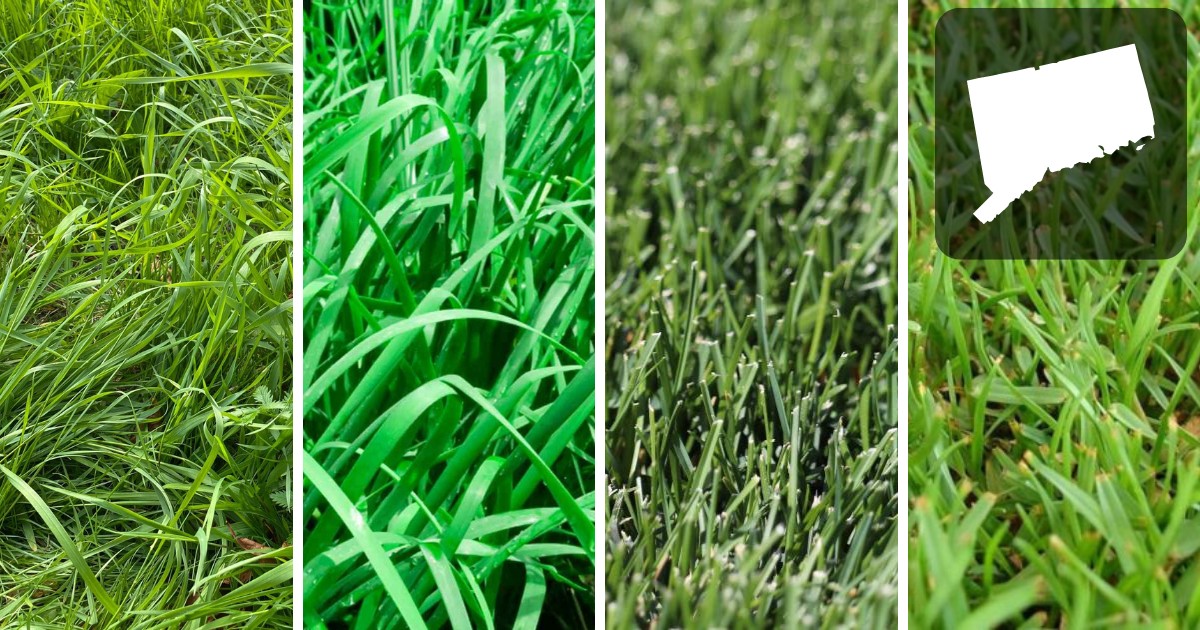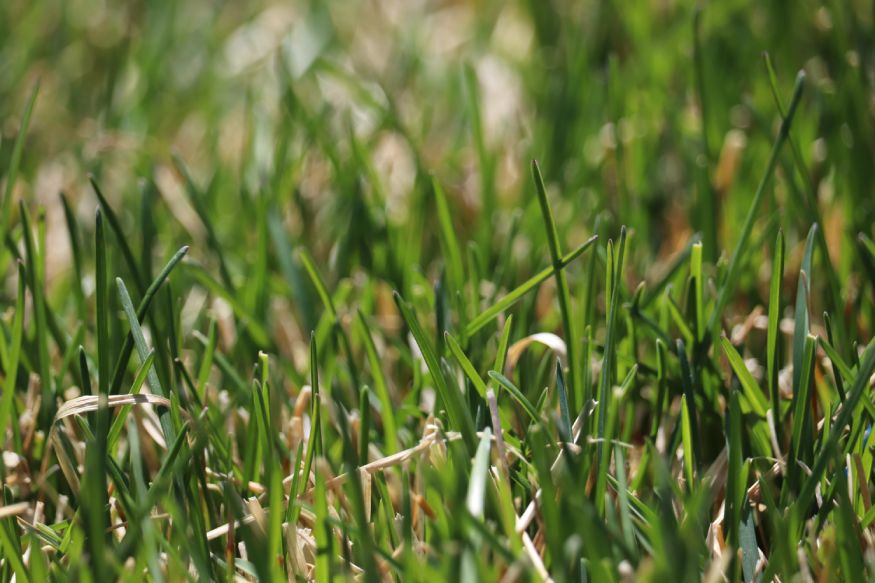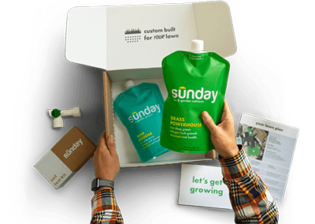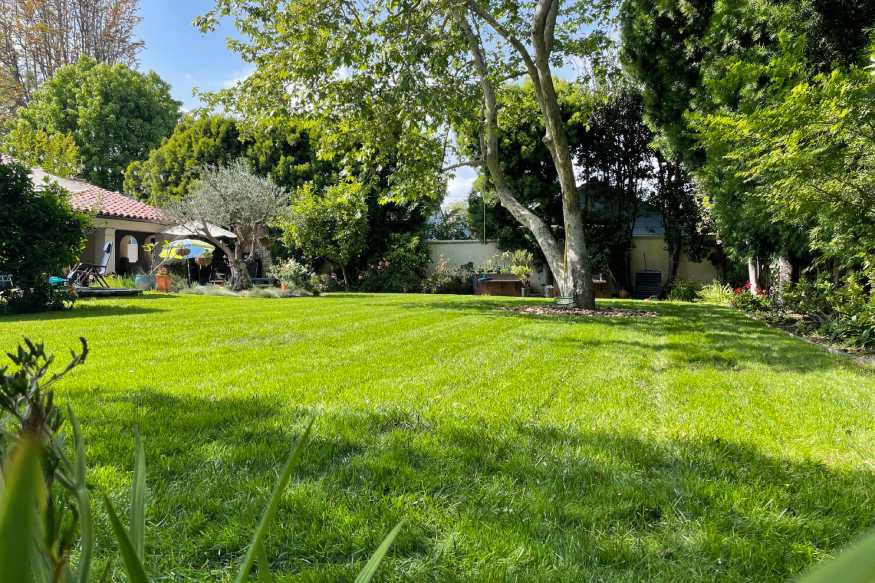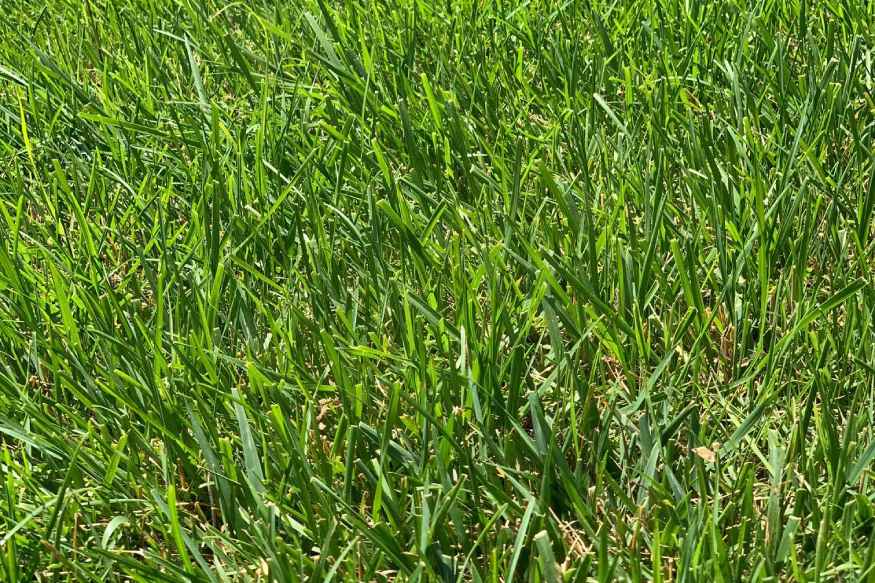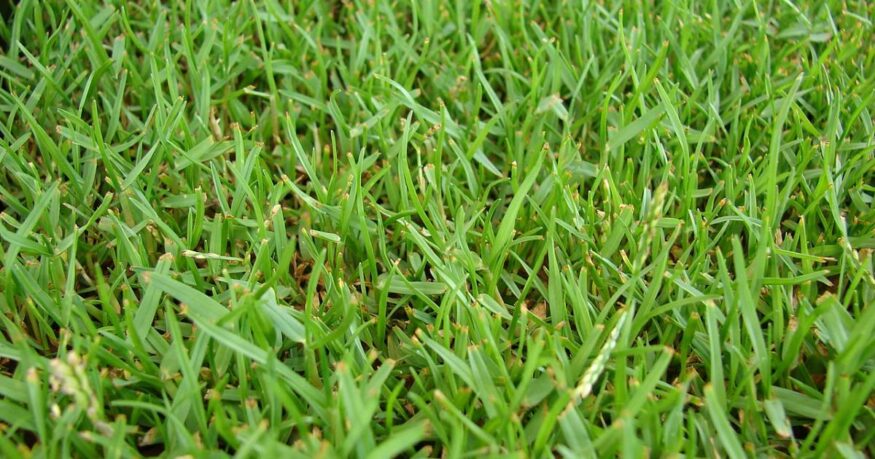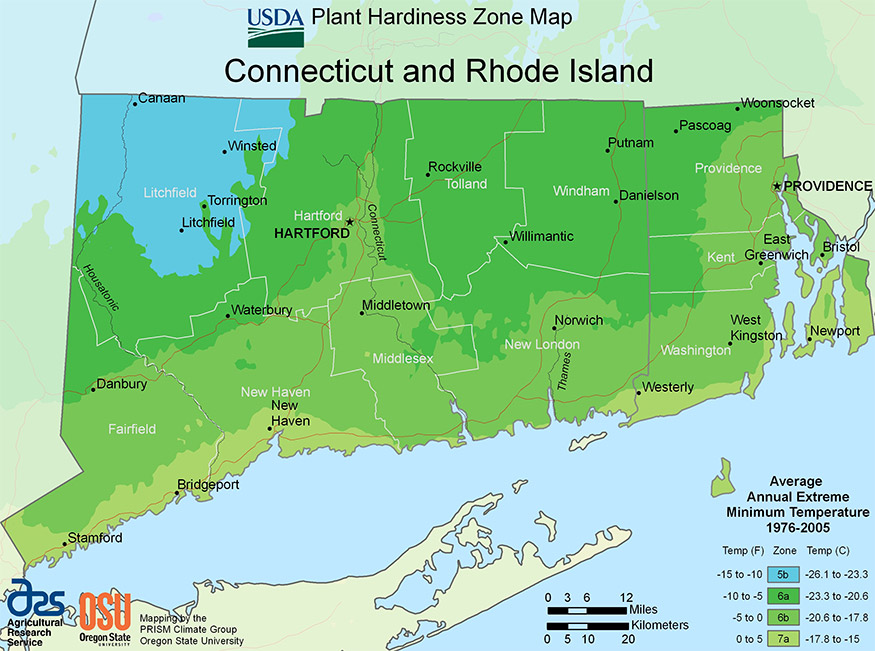Connecticut’s climate and soil conditions present unique challenges to those who are looking to create a lush and healthy lawn. With a mix of harsh winters, hot summers, and varying soil types, selecting the right grass seed is essential for a successful lawn. Kentucky Bluegrass is a popular choice due to its ability to withstand the region’s harsh winters and its attractive, lush appearance. However, there are other options that may suits your circumstances better.
In this article, we’ll explore the best grass seed options for Connecticut lawns, considering factors such as shade tolerance, disease resistance, and drought tolerance, to help you make an informed decision for your lawn.
So whether you’re a seasoned gardener or just starting out, read on to discover the best grass seed for your Connecticut lawn.
[ez-toc]
Kentucky Bluegrass
| Also Known As | Poa pratensis L. |
| Type of Grass | Cool season perennial |
| Optimal Zones | Northern cool season zone, transition zones |
| Root Structure | Shallow |
| Winter hardiness | Excellent |
| Shade tolerance | Poor to Good |
| Water Requirements | High |
| Drought Tolerance | Poor |
| Self Repair Capacity | Excellent |
| Overall Maintenance Requirements | High |
Why Kentucky Bluegrass is The Most Popular Choice For CT
Kentucky Bluegrass is one of the most popular grass varieties in Connecticut, and for good reason. This cool-season grass is well-adapted to the cold climate, and can grow quite well in the region. Once established, Kentucky Bluegrass is known for its fine, lush texture and dense growth habit, creating a picturesque and healthy lawn. However, homeowners should be aware that this grass may require a bit more maintenance than other grasses to keep it green and healthy. Insect infestations can also be an issue, so it’s important to take proactive measures to control pests.
Despite these potential downsides, Kentucky Bluegrass is a high-quality, sod-forming grass that can help create an attractive and resilient lawn. It has excellent recuperative potential, and its shallow roots spread via rhizomes, allowing it to repair itself and withstand wear and tear. However, like other cool-season grasses, Kentucky Bluegrass is not particularly wear-tolerant, and it may require a bit of extra care to keep it in good shape.
This grass is known for its beauty, and it responds well to fertilization and irrigation, forming a dense sod that can help reduce soil erosion. While it may turn brown and go dormant during hot, dry summers with no irrigation, it will typically recover when cooler and wetter weather returns.
When seeding a lawn with Kentucky Bluegrass, it’s important to select blends that include two or more disease-resistant varieties. This can help reduce the risk of disease and ensure that your lawn stays healthy and vibrant. So if you’re looking to create a lush and attractive lawn in Connecticut, consider Kentucky Bluegrass as a top choice.
Looking for the best grass seed for your region?
Our smart lawn plans are designed to work perfectly with your local soil and climate conditions, without any of the toxic stuff.
Use the code EHG20 for an instant $20 discount!
- Personalized lawn care: Custom lawn plans based on soil analysis, climate data, and your specific lawn needs.
- Convenience with a conscience: Products that are not only easy to use but also safe for you, your pets, and the planet.
- Science-backed formulas: Bio-based formulas contain effective, natural ingredients like seaweed, molasses, and iron.
- Expert support: Get one-on-one guidance from a real person and rest easy with Sunday's satisfaction guarantee.
Perennial Ryegrass
| Also Known As | Lolium perenne L. |
| Type of Grass | Cool season perennial |
| Optimal Zones | Mild northern zones |
| Root Structure | Deep |
| Winter hardiness | Good to excellent |
| Shade tolerance | Moderate |
| Water Requirements | High |
| Drought Tolerance | Good |
| Self Repair Capacity | Excellent wear tolerance |
| Overall Maintenance Requirements | Moderate to high |
What Makes Perennial Ryegrass A Great Grass For Connecticut
Perennial Ryegrass is an excellent option for Connecticut homeowners looking to establish a low-maintenance lawn that is resistant to insects. This cool-season grass is well-suited to colder climates, and it grows quickly and adapts well to different soil types. To ensure its success, however, it’s important to plant this grass type in areas that receive plenty of sunlight.
Ryegrass is a bunching cool-season grass that offers good heat tolerance and may be drought resistant. Its fine texture and excellent mowing qualities make it an attractive choice for many homeowners. While this grass is disease-resistant and has good insect resistance, its freezing tolerance may suffer if it’s flooded or exposed to wind.
To bring out the signature dark green color of ryegrass, it requires total exposure to the sun. It’s also a great choice when blended with other cool-season grasses like Kentucky Bluegrass and Fine Fescue. Improved perennial ryegrasses are the easiest to establish and have good winter hardiness, making them an excellent choice for homeowners in Connecticut.
While ryegrasses do require some care and attention, they are generally low-maintenance and can withstand heavier traffic. They work well in combination with other grasses like Kentucky Bluegrass and fine fescues, and they can help create an attractive and resilient lawn that can stand up to the region’s weather and soil conditions.
So if you’re looking for a fast-growing, adaptable grass type that can help create a beautiful lawn in Connecticut, consider giving Perennial Ryegrass a try.
Tall Fescue
| Also Known As | Lolium arundinaceum (formerly Festuca arundinacea) |
| Type of Grass | Cool season perennial |
| Optimal Zones | Northern through transition zones |
| Root Structure | Deep |
| Winter hardiness | Excellent |
| Shade tolerance | High |
| Water Requirements | Medium to High |
| Drought Tolerance | Excellent |
| Self Repair Capacity | Limited |
| Overall Maintenance Requirements | Low |
Why Tall Fescue Grows well in CT
Tall Fescue is a popular cool-season grass that’s well-suited to Connecticut’s colder climate. This grass is fast-growing and drought-resistant, making it a great choice for homeowners looking for a low-maintenance option. Tall Fescue is also able to handle some shade and will stay green all year round, making it an attractive choice for those who want a lush and resilient lawn.
Tall fescues are deep-rooted grasses that are known for their drought resistance, disease resistance, and shade tolerance. While they can be slow to recover from divoting and may become clumpy if not established properly, they are generally a resilient and attractive grass type. They are also slow to form thatch, which can be an advantage for homeowners looking for a low-maintenance option.
Tall Fescue has good heat tolerance due to its deep root system, and it can retain its green color under prolonged exposure to direct sunlight. However, one potential issue to watch out for is grey leaf spot disease, which can be common in this type of grass. This fungal issue can impact certain varieties of tall fescue and may require proactive measures to control.
Overall, Tall Fescue is a standout cool-season grass that is adaptable to a wide range of soil conditions and can withstand moderate maintenance. It’s a popular choice throughout the transition zone and is known for its resilience, disease resistance, and salt tolerance.
While it may not self-repair like some other grasses, it’s an excellent choice for homeowners looking for a low-maintenance, drought-resistant lawn that can stand up to the region’s weather and soil conditions.
Zoysia Grass
| Also Known As | Zoysiagrass; Zoysia sp. |
| Type of Grass | Warm season perennial |
| Optimal Zones | Southern through warmer transition zones |
| Root Structure | Shallow to medium |
| Winter hardiness | Good |
| Heat tolerance | Excellent |
| Shade tolerance | Partial |
| Water Requirements | Medium |
| Drought Tolerance | Good |
| Self Repair Capacity | Low |
| Overall Maintenance Requirements | Moderate |
Why Zoysia Is a Popular Grass seed Choice
While it may be the only warm-season grass option for Connecticut homeowners, Zoysia grass is an excellent choice for those looking for a drought and salt-tolerant lawn. This grass is only green during the warmer months, but it grows quickly and aggressively, making it an excellent option for those who live along the coast.
Zoysia grass has a deep root system that can tolerate drought, saltwater intrusion, and foot traffic better than other grass types. However, one potential drawback is that it can become invasive and spread to areas where growth is unwanted. Despite this, Zoysia is an excellent option for those who want a resilient and attractive lawn.
This grass type is not ideal for mixed plantings, as it is highly aggressive and has a brown appearance except for during the hottest months of the year. However, it is salt-tolerant and can withstand drought conditions better than many other grass types. While it may build up thatch and outcompete other grasses, it offers excellent resistance to wear and tear.
Overall, Zoysia grass is an excellent choice for Connecticut homeowners living on the coast looking for a warm-season grass that can handle the region’s weather and soil conditions. While it may not be ideal for mixed plantings, it offers excellent resistance to wear and tear and is highly salt-tolerant. So if you’re looking for a grass type that can thrive in the summer months and stand up to the region’s harsh weather conditions, consider giving Zoysia grass a try.
Climate And Growing Challenges For Lawns in CT
Connecticut has a humid, continental climate, which can present some challenges when it comes to growing a healthy lawn. The state experiences hot summers and cold winters, with temperatures that can range from the low 20s in the winter to the mid-80s in the summer. This climate can make it difficult to find grass types that can withstand these temperature extremes.
Soil Conditions
Connecticut’s soil can also pose a challenge for homeowners looking to plant a lawn. The state’s soil is generally rocky and acidic, which can make it difficult for grass to grow. In addition, some areas may have soil that is too wet, which can also be problematic for grass growth.
Drought Conditions
Another challenge facing Connecticut homeowners is drought. The state experiences periodic drought conditions, particularly during the summer months. This can make it difficult to maintain a healthy lawn, as grass may struggle to survive in dry soil conditions.
Insect and Disease Issues
Connecticut lawns are also susceptible to a range of insect and disease issues. Common problems include grubs, chinch bugs, and fungal diseases like dollar spot and brown patch. These issues can cause significant damage to a lawn and may require proactive measures to control.
Despite these challenges, there are several grass types that can thrive in Connecticut’s climate and soil conditions. By choosing the right grass type and taking steps to maintain a healthy lawn, homeowners can enjoy a lush and vibrant lawn that enhances the beauty and value of their property.
Looking for the best grass seed for your region?
Our smart lawn plans are designed to work perfectly with your local soil and climate conditions, without any of the toxic stuff.
Use the code EHG20 for an instant $20 discount!
- Personalized lawn care: Custom lawn plans based on soil analysis, climate data, and your specific lawn needs.
- Convenience with a conscience: Products that are not only easy to use but also safe for you, your pets, and the planet.
- Science-backed formulas: Bio-based formulas contain effective, natural ingredients like seaweed, molasses, and iron.
- Expert support: Get one-on-one guidance from a real person and rest easy with Sunday's satisfaction guarantee.
Frequently Asked Questions
What is the best grass seed for Connecticut lawns?
Kentucky Bluegrass is a popular choice due to its ability to tolerate Connecticut’s harsh winters and its attractive, lush appearance. However, there are other options to consider based on your lawn’s unique needs, such as Perennial Ryegrass and Tall Fescue.
What type of grass seed is best for a shady Connecticut lawn?
Fine Fescue and Perennial Ryegrass are good options for Connecticut lawns with limited sunlight. They can tolerate partial shade and still maintain their attractive appearance.
How often should I water my Connecticut lawn when using Kentucky Bluegrass seed?
Kentucky Bluegrass requires frequent irrigation, especially during hot, dry summers. It’s recommended to water deeply and infrequently, about once or twice a week, to encourage deep root growth and prevent the grass from becoming too dependent on water.
Can I mix different types of grass seed for my Connecticut lawn?
Yes, blending different types of grass seed is common and can help create a lawn that is more resistant to disease, pests, and environmental stressors. However, be mindful of the growth habits and needs of each type of grass when selecting a blend.
What grass seed is best for Connecticut’s coastal areas?
Zoysia grass is a good option for Connecticut lawns along the coast as it is salt-tolerant and can handle coastal weather conditions. However, it is a warm-season grass and will only be green during the warmer months.
